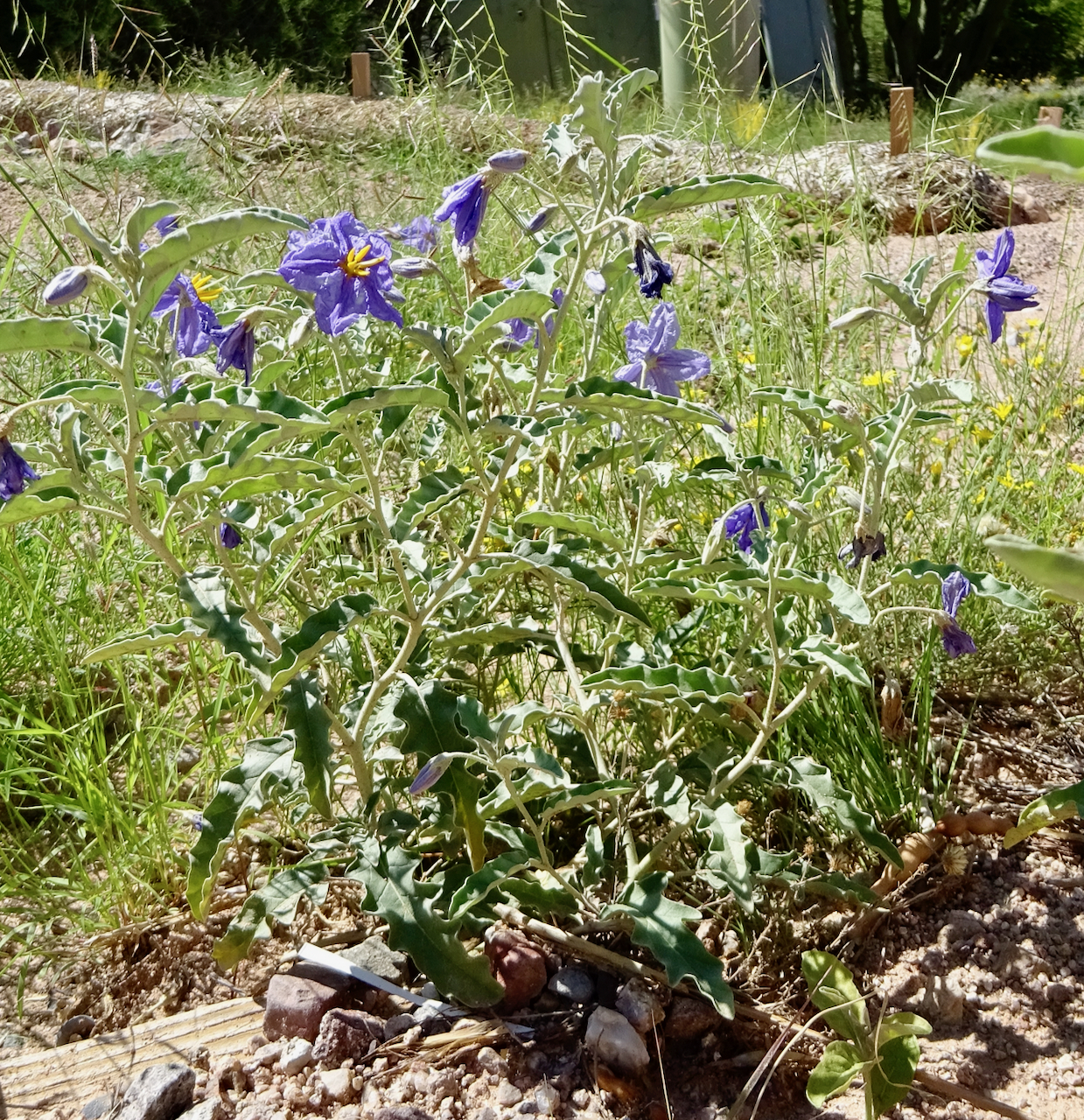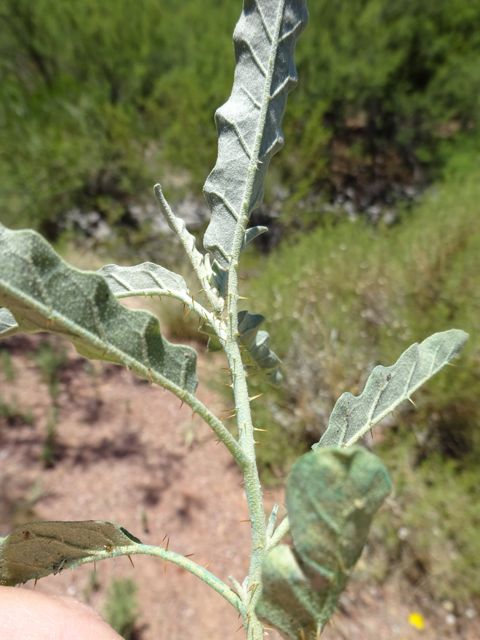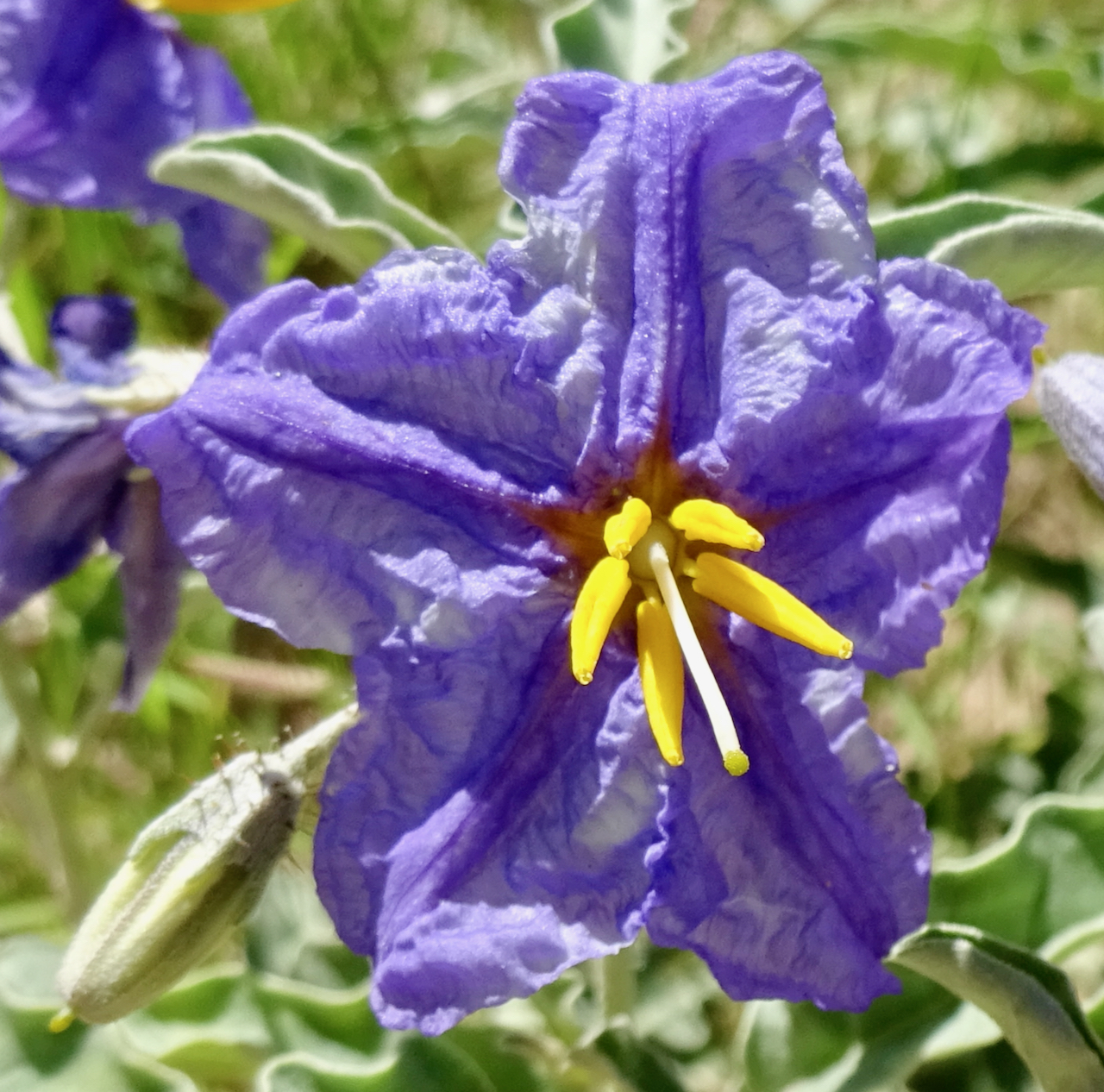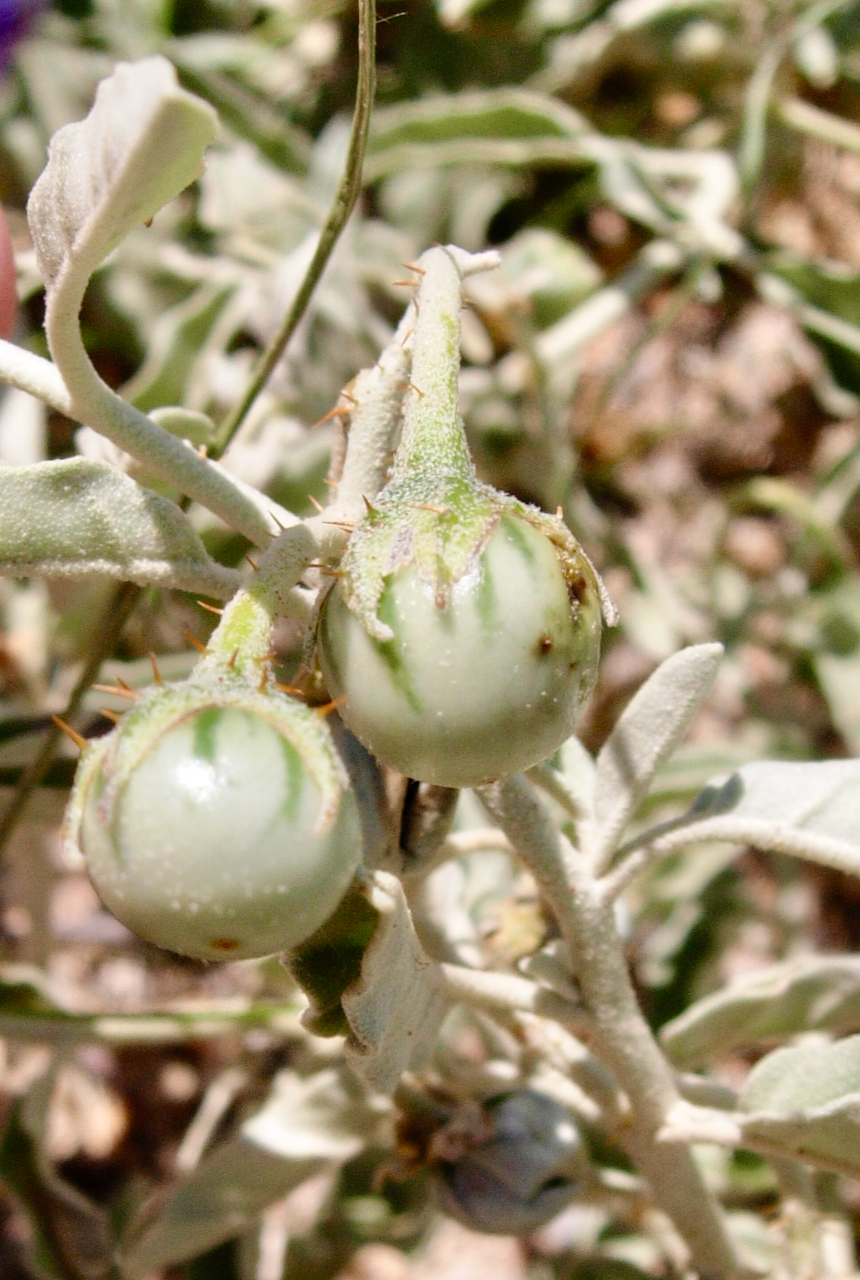Silverleaf Nightshade
Solanum elaeagnifolium
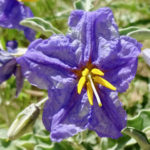
About the Plant
Silverleaf nightshade is native to southwest US and northwest Mexico. Though not an obvious problem in the Rincon Valley, in field and forage situations is is considered a weedy pest. It completes with crops for water and nutrients, often reducing yield. It is poisonous to horses, sheep, and cattle. Silverleaf nightshade has spread around the world and is a pest in many countries (the Afrikaan word for this plant is satansbos - Satan's bush).
If you allow this nightshade to grow in your yard, please realize it is a perennial and very difficult to eliminate. Herbicides often will not control it. Digging it out is difficult because even small pieces of root can grow into a new plant. Grow this one with care!
CAUTION: this plant is poisonous
Wildlife value: none obvious, though some birds may eat the fruit
More Information
Weekly Plant on silverleaf nightshade
Information from Invasive Species Compendium
Information from Texas Beyond History
Map of distribution in US (pink indicates plant is considered noxious)
Technical botanical description from SEINet
